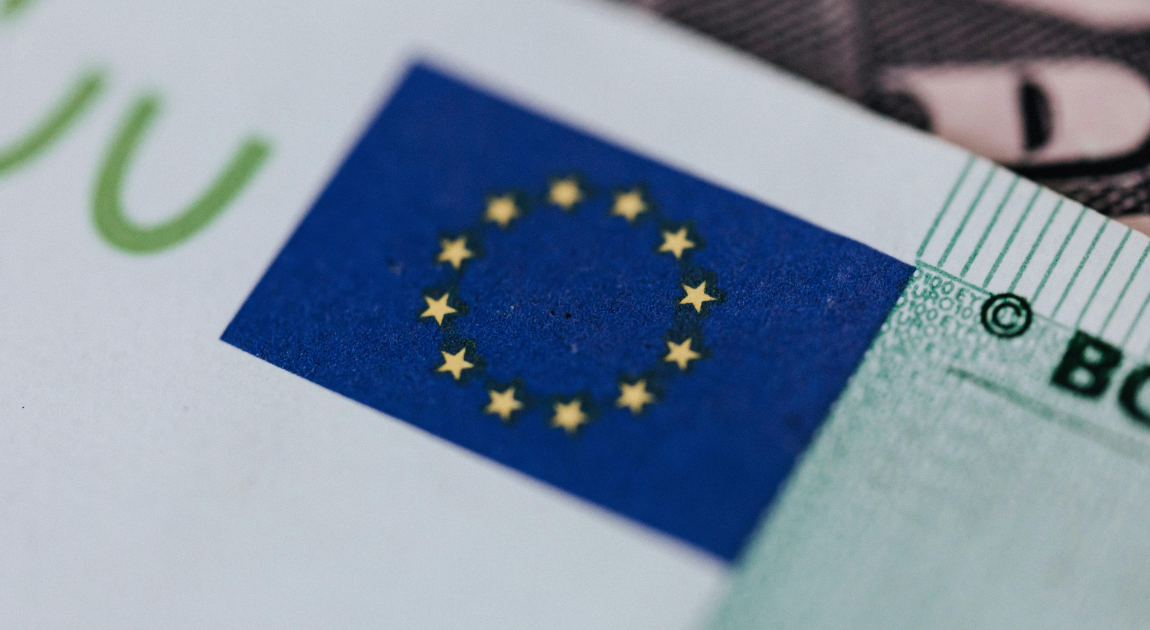With the EU’s “VAT in the Digital Age” (ViDA) package adopted in March 2025, major changes are now on the horizon. Starting in 2026, several countries will begin mandatory B2B e-Invoicing, while intra-EU e-Invoicing will become the standard by 2028. These developments mark a significant shift in how businesses across the EU must handle their invoicing processes; and the clock is ticking.
In this article, we explore the evolving landscape of e-Invoicing in Europe: what’s required, what’s changing, and how businesses can turn compliance into an opportunity.
The e-Invoicing mandate in brief
The European Union is currently taking serious steps towards making e-Invoicing the norm across the member states. What was, until recently, mostly optional everywhere except for B2G transactions, and (in some cases) transactions within a particular country, is slowly becoming mandatory for B2B, and will eventually be required for B2C, as well.
The basic regulatory framework is the EU e-Invoicing Directive (2014/55/EU), which regulates electronic invoices within the EU, ensuring that e-invoices are compliant with VAT regulations and accounting standards. A standardized UBL format is in place, too.
Now that the VAT in the Digital Age (ViDA) is added to the mix, mandatory e-Invoicing for intra-EU B2B transactions will be the reality by 2028, with countries like Belgium and France starting as early as 2026.
The changes are to be implemented differently in different countries, partly based on what’s already implemented. For example, Italy already has its SdI platform, and Poland is introducing B2B invoicing through the KSeF (Krajowy System e-Faktur).
VAT in the Digital Age (ViDA) and e-Invoicing in Europe
ViDA was adopted as a package in March 2025 and will be implemented stepwise until 2035. As is known, ViDA’s primary goal is to reduce the EU’s VAT gap, which, according to 2022 calculations, stands at approximately €61 billion in uncollected VAT annually. Since one of the most important considerations behind implementing mandatory e-Invoicing is tackling tax evasion, the ViDA initiative is at the very heart of the process.
Since it focuses on VAT treatment of the platform economy, single VAT registration, and digital reporting requirements (which is directly linked to e-Invoicing). Which sets the vector for further development of the corresponding systems.
ViDA aims to make structured e-Invoicing the default method for cross-border B2B transactions starting in 2028. This will require all invoices to be machine-readable (e.g., in EN 16931 XML format which is the minimum) and compliant with national or EU-wide platforms. Meanwhile, PDF invoices will no longer be eligible. Approval from the European Commission for domestic e-invoicing will no longer be required.
European electronic invoice formats, systems, and requirements
One of the chief European e-Invoicing requirements for compliance now is the machine-readable structure of the invoice, which should now be based on standardized XML schemas. In this way, software can seamlessly automate validation, which makes tax and accounting more transparent.
The central piece of the puzzle is EN 16931, the European Norm for e-Invoicing. This semantic data model ensures that all invoices contain the necessary information for tax and cross-border interoperability. The formats based on this include Peppol BIS, Factur-X, and UBL.
That being said, the EU B2B and B2G e-Invoicing and e-reporting landscape is not uniform yet – and the general trend is that the ViDA initiative will aim not so much to substitute the different systems as to harmonize them.
After all, it is on the national level that rules for digital signatures, archiving, and audit trails are defined, so it would make zero sense to try to erase the previous system evolution in those directions.
Benefits of e-Invoicing in the EU for the business
As usual with regulations that require tech solutions, it’s a good idea for businesses to look for some collateral benefits that come with implementation. This case is not an exception, actually, and there are quite a few if you know where to look:
- Reduced costs and faster processing. Companies have been adopting e-Invoicing for this very reason for a while now, with invoice processing costs dropping by 60-80%. Also, since manual invoice processing takes up anywhere between 5 to 20 minutes per document, automation allows to keep the time under 5 minutes. This is especially noticeable for medium to large companies with a lot of invoices to handle.
- Improved cash flow and payment cycles. Now this is something that SMEs can call good news. The payment cycle with e-Invoicing platforms is around 18-23% faster on average, which also helps with forecasting of cash flow.
- Increased accuracy and fewer disputes. The Institute of Finance & Management estimates that 3.6% of paper invoices contain errors; with e-Invoicing, this rate is down to <1%, especially when the platform is integrated with procurement and ERP systems – which lowers the incidence of disputes.
- Sustainability and ESG reporting. The average paper invoice generates about 250-300 grams of CO2, and the savings are directly proportionate to the amount of invoices processed.
What kinds of e-Invoicing solutions are available?
So what kind of digital platforms are there to adopt so that the business can extract side benefits from compliance? The answer largely depends on what size the company is, how many invoices are processed in a period, and, of course, the regulatory environment in the countries where you operate. Let’s look at some of the options.
ERP-integrated e-Invoicing modules
Many of the common ERP systems offer built-in e-Invoicing modules or connectors, so if you use an ERP, it makes sense to check if it supports the standard of your countries of operation (PEPPOL, Facturae, or FatturaPA, etc.). This practically solves the challenge, while maintaining integration with procurement and finance.
SaaS e-Invoicing platforms
A more-than-valid option for SMEs or companies that scale fast, SaaS can offer plug-and-play functionalities, like web portals for invoice creation and submission. They will need to support the required format, and offer archiving features, validation, and signatures.
PEPPOL Access Points
PEPPOL (Pan-European Public Procurement On-Line) is a standardized e-Delivery network used across much of Europe. Since it’s so common, and the default in many countries, multiple e-Invoicing solutions include or integrate with PEPPOL Access Points. The advantages of these include compliance with e-Procurement standards, and general familiarity in over 30 countries within and outside the EU.
Government portals and national platforms
Italy, France, Spain, and Poland have centralized platforms:
- Italy: FatturaPA via Sistema di Interscambio (SdI)
- France: Chorus Pro for B2G and upcoming PPF for B2B
- Spain: FACe and TicketBAI (regional)
- Poland: KSeF (Krajowy System e-Faktur)
Meanwhile, Belgium has Mercurius for B2G transactions, while B2B can choose as long as it is PEPPOL-based. Germany, though it doesn’t have anything like the Spanish or Polish platform, is merging ZRE and OZG-RE together for federal-bound invoices, which might be the beginning of something at least for the B2G sphere (time will show).
These systems typically support XML formats and often require digital authentication (e.g., eIDAS certificates).
Custom or hybrid solutions
Finally, going for a custom solution is the best choice for companies with unique workflows or legacy infrastructure. In practice, this doesn’t always mean creating the entire ecosystem from scratch; in our experience, many cases simply require a hybrid solution where different systems are carefully connected via APIs. The advantages of this approach are that you can stay flexible across jurisdictions, and have full control over data storage, formats, and transformation logic. Plus, you decide what to integrate with and when.
How to implement electronic invoicing with maximum benefits
Ideally, implementing e-Invoicing should be not just about investing into compliance, but also receiving the additional benefits from the software used. This is not a new situation – so here are some of the best practices accumulated in the past, applied to the current moment.
#1 Assess the current invoicing flow
It is always a good idea to clearly identify the current state of things, with its possible gaps, manual touchpoints, and idiosyncratic aspects. Ask questions: what systems are used? How important is ERP or CRM? What countries does the company operate and where are you planning to go in the short to mid-term perspective?
#2 Choose the e-Invoicing solution
This is where you can decide between the general directions to take: either an ERP-integrated module (when you need more automation), easy-to-use SaaS, PEPPOL access for public sector compliance – or some sort of custom solution.
#3 Legal and fiscal minutiae
Every e-Invoicing rollout must include legal validation:
- Digital signature and timestamping (eIDAS or country-specific certificates)
- Archiving requirements, often 10+ years, with secure, auditable access
- VAT reporting rules, especially under the ViDA reform
- Data protection (e.g., GDPR compliance)
Accordingly, legal and accounting teams need to be involved, too.
#4 Integrate with internal systems
In the first step, you likely noted what integrations you needed, and that influenced the choice of solution. This is necessary to gain real automation and visibility. Many find they want invoices synced with procurement systems, with automated reconciliation and status tracking. This is the step where you can actually implement it.
#5 Onboard teams and partners
Systems are only adopted as much as the target users understand them, so it makes sense to provide clear and short training sessions and support. If you have a custom solution developed, the software vendor must be able to help with onboarding and maintenance, too. Partners will also need updates on format, submission channels, and required fields.
Conclusions
On the surface, mandatory e-Invoicing may seem like just a regulation, but in reality, companies have been implementing it for purely business reasons. What’s happening now is that the tech abilities will be slightly equated across companies. To be able to fully benefit from it, it pays off to choose the right solution and integrate it correctly.
We at Lionwood.software are anything but new to building custom solutions inspired by changes in regulatory compliance – and helping businesses extract more value than the initial investment. Whether you need to integrate with existing ERPs, connect to national platforms like KSeF or SdI, or develop a custom e-Invoicing system that fits your unique processes — we’re here to help. You can contact us for a free consultation and project discovery at any moment.
FAQ
Is e-Invoicing already mandatory across the EU for all businesses?
Not yet. While B2G e-Invoicing is already mandatory in most EU countries, B2B requirements vary by country. Under the ViDA reform, mandatory B2B e-Invoicing will start rolling out from 2026 (e.g., France, Belgium) and become the default for intra-EU B2B transactions by 2028.
What invoice formats are accepted under the new regulations?
Invoices must be machine-readable and comply with EN 16931 standards. Common formats include UBL, Factur-X, and PEPPOL BIS. PDF invoices will no longer meet compliance for cross-border transactions under ViDA.
Can my existing ERP system be used for e-Invoicing?
In many cases, yes. Most modern ERP platforms offer e-Invoicing modules or connectors. However, they must be configured to support the formats and requirements of each country you operate in, such as digital signatures, archiving rules, and local reporting systems.
Is custom e-Invoicing software necessary?
Not always in the sense of building from scratch. SMEs may find SaaS or ERP-based solutions sufficient. However, businesses operating in multiple countries, with complex workflows or legacy systems, often benefit from custom or hybrid e-Invoicing solutions to ensure full control, flexibility, and compliance.












